Buy 2 pairs or more and get Free delivery
Research and studies
Wearing the right footwear is important for infants and toddlers to form a normal walking pattern. Therefore, kinetic analysis of walking patterns provides important data for the development of baby footwear.
Based on kinetic and plantar pressure physio-dynamic tests of toddlers’ gait, Attipas designs encourage a steady and stable walking pattern. From supporting the angle of the leg joint to helping brain development through feeling the sole and toe movements, Attipas corrects toddlers’ walking behaviour.
Attipas specifically designs shoes to suit infants and, more particularly, shoes to suit the walking characteristics of infants and toddlers, rather than adults.
What is plantar pressure assessment?
Measurements of plantar pressure provide an indication of foot and ankle function during gait and other functional activities, because the foot and ankle provide both the necessary support and flexibility for weight bearing and weight shifting while performing these activities.
The use of force platforms is the method most commonly employed to assess the interaction of the foot and the supporting surface. The force platform provides valuable information regarding both the vertical and shear components of the ground reaction force.
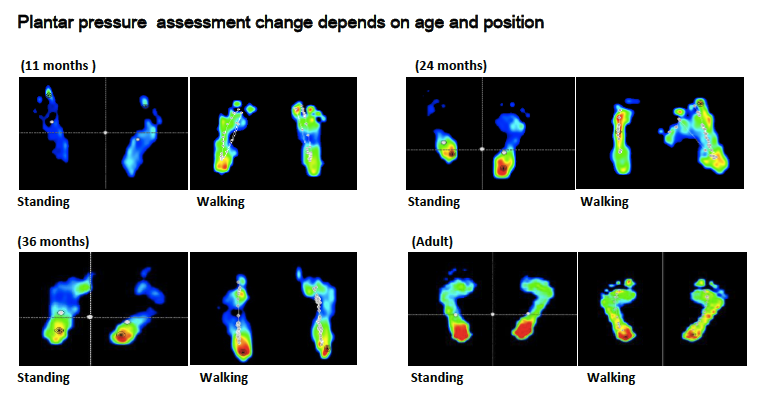
Method:
Three participants aged 1 to 3 years were recruited: PSY, SSS and KHJ. Three walking tests with several variables were performed and data collected:
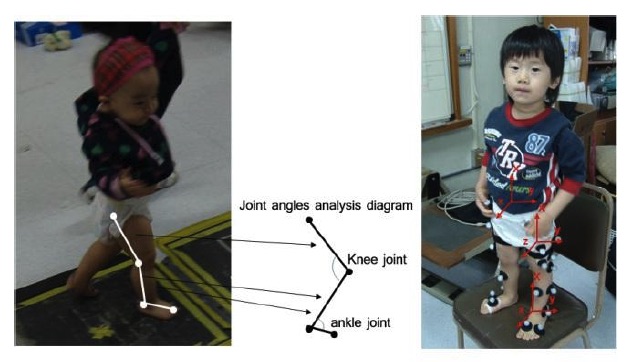
1st test: Plantar pressure- barefoot, soft shoes, hard shoes
- barefoot, low heel, middle heel, high heel
2nd test: Ankle angle changes
- barefoot, soft shoes, hard shoes
- barefoot, low heel, middle heel, high heel
3rd test: Knee angle changes
- barefoot, soft shoes, hard shoes- barefoot, low heel, middle heel, high heel
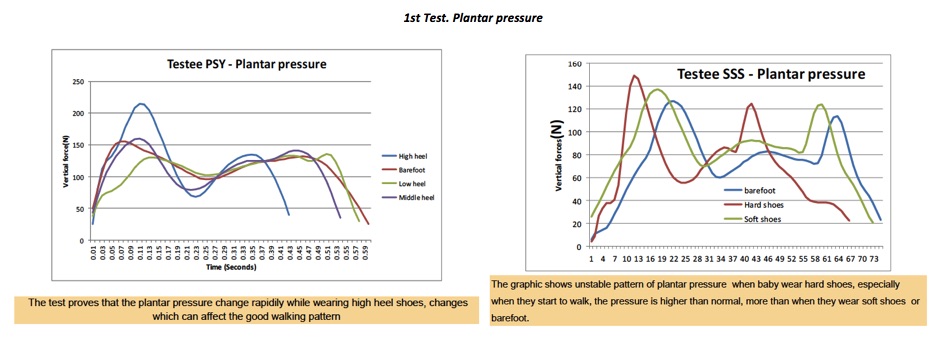
Result : The first test (Plantar Pressure) shows that low and soft shoes are the most appropriate option for babies. The graphs illustrate that gait pressure wearing low and soft shoes is very similar to barefoot.
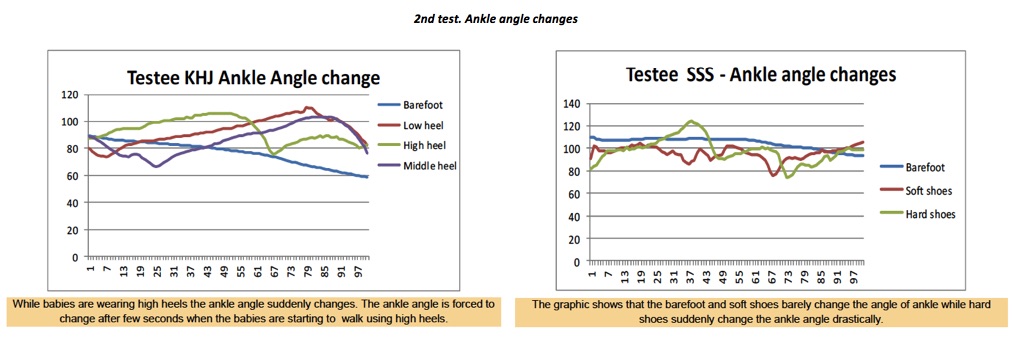
Result : The second test (Ankle Angle Changes) shows that a low heel and soft shoes only slightly change the ankle angle. The test suggests that soft shoes with a flat heel are recommended for optimal walking by babies.
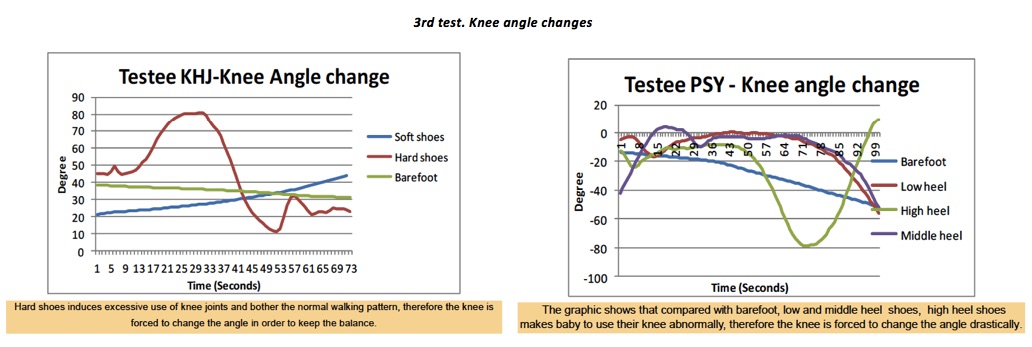
Result: The third test (Knee Angle Changes) proves that high heels and hard shoes can affect the proper walking of babies by changing the knee angle and forcing the knee to be used abnormally.
Conclusions
Analysing the results of the tests, we can determine that the best choice for the efficient and correct development of our babies’ feet is for them to go barefoot. However, due to natural and social circumstances, it is not actually ideal for babies to have their feet bare all the time.
Therefore infant and toddler shoes were created, taking on the dual roles of protecting small sensitive feet and offering their wearers the support they need when they start to walk. However, the existing ranges for infants and toddlers are produced without consideration of unique age-specific physical form characteristics and gait characteristics. In other words, most of them copy the shapes and structures of adult shoes, introducing the risk of poor walking pattern development or, worse, decline in cognitive behavioural development and intellectual development.
If babies are forced to wear inadequate shoes, their feet can suffer from abnormal growth, malformation or a physical development imbalance. Using existing shoe ranges, the centre of gravity rises the same amount higher as the thickness of the outsole. As a result, toddlers experience difficulty balancing their body.
Attipas shoes are a new type of shoe created in close consultation with the foot shape and walking characteristics of infants and toddlers. Our shoes are divided into three parts: the front space, where toes are placed, the middle space, where top of the foot is placed, and the rear space, where the heel is placed. The length of the internal space is between 108mm and 155mm. At a position 80-85% from the rear of the shoe, the height of the internal space is between 20mm and 30mm (the height of the outsole).
Learning from others’ mistakes and performing suitable research, Attipas was created to overcome all the above problems. The front part of the shoe has enough space for toes, offering a fan-shaped form in accordance with the shape of infant and toddler feet, which helps provide stable walking and cognitive behaviour development. The shoe has internal space that becomes wider from the back to front, without creating any interference between shoes and feet. The sole is made from soft and flexible material, so smooth movement of feet is possible. In addition, Attipas has minimised the thickness of its sole, so the overall centre of gravity of the infants is as low as possible, making our babies feel more confident about keeping their balance while walking.
Attipas - the science of walking!



